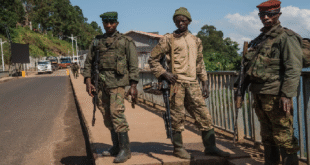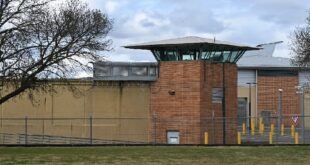21-05-2025
Bureau Report
NEW DELHI: Nearly 60% of Indian districts, home to three-quarters of the population, face a “high to very high” risk from extreme heat, with rising night-time temperatures and humidity compounding the health impact, a study has found.
The report, published on Tuesday by the New Delhi-based Council on Energy, Environment and Water (CEEW) think tank, analyzed climate, health, and infrastructure data to calculate a heat-risk score.
 “About 57 per cent of Indian districts, home to 76 per cent of India’s total population, are currently at high to very high heat risk,” the study found, with the heat risk in the capital New Delhi among the highest.
“About 57 per cent of Indian districts, home to 76 per cent of India’s total population, are currently at high to very high heat risk,” the study found, with the heat risk in the capital New Delhi among the highest.
The study comes as some parts of north India continue to grapple with heatwave and severe heatwave conditions. Billions of people across South Asia grapple with soaring temperatures each year, a trend scientists say has been exacerbated by human-driven climate change.
The study also flagged a rise in relative humidity across north India, including in traditionally arid regions, which worsens heat stress on the human body by slowing the process of sweating and making it harder to release heat as temperatures soar.
Factoring in more dimensions like humidity and demographics in heat risk planning, and creating a national repository of heat action plans for cross-learning between states are among the measures the study recommends to “bridge the heat resilience gap”.
India recorded more than 40,000 suspected heatstroke cases and at least 110 confirmed deaths between March 1 and June 18 last year, when it’s northwestern and eastern parts recorded more than twice the usual number of heatwave days.
Last year, the heatwave gripping northern India has killed nearly 200 homeless people in New Delhi over the last week, a group dedicated to helping the homeless said on Thursday, as the country grapples with record high summer temperatures.
As many as 52 bodies were brought to hospitals in the past two days, the Times of India reported on Thursday, adding that most of them were poor people who lived and worked in the open.
 A total of 192 homeless people died in New Delhi between June 11 and June 19, according to government figures shared by non-profit organization Centre for Holistic Development, higher than in previous years.
A total of 192 homeless people died in New Delhi between June 11 and June 19, according to government figures shared by non-profit organization Centre for Holistic Development, higher than in previous years.
“The poorest bear the cost of such climate change. Most of these people live below flyovers and out in the open and have no protection against the heat. These are mostly heatwave deaths,” Sunil Kumar Aledia, who runs CHD, told Reuters.
India has recorded more than 40,000 suspected heatstroke cases this summer and at least 110 confirmed deaths between March 1 and June 18, when northwest and eastern India recorded more than twice the usual number of heatwave days.
“A prolonged summer should be classified as a natural disaster,” The Hindu newspaper said in an editorial on Thursday, pointing to water shortages and record power demand.
The health ministry ordered federal and state institutions to ensure immediate attention to patients, while hospitals were directed to make more beds available.
The weather office has forecast above normal temperatures for this month as well, and Delhi saw its warmest night in over 50 years on Wednesday, with a minimum temperature of 35.2 degrees Celsius (95 degrees Fahrenheit), data from the weather department showed.
Temperatures, however, dropped nearly 6 degrees to 37 degrees Celcius (98.6 F) on Thursday in New Delhi after rain brought respite from the heat, weather department data showed.
 Pressmediaofindia
Pressmediaofindia




